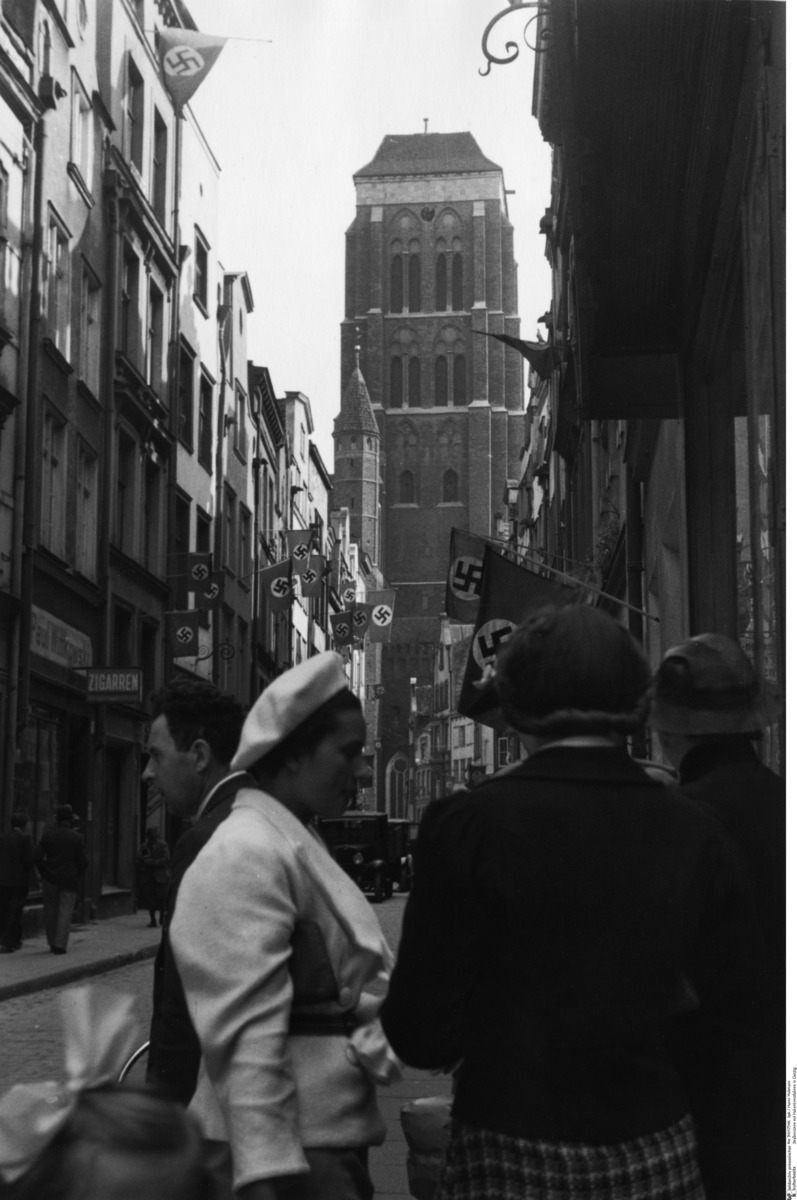Abstract
After the end of the First World War, Germany had been forced to cede
a strip of land in West Prussia (the so-called Polish Corridor) to
Poland. In addition, the harbor city of Danzig and the surrounding area,
with its predominantly German population, was placed under the
protection of the League of Nations. After 1933, the NSDAP became the
strongest party in the Danzig popular assembly. Thereafter, it
increasingly agitated against the city’s Polish residents and government
and demanded that Danzig be returned to the German Reich. In early 1939,
Hitler began systematically provoking a conflict in Danzig and the
Polish Corridor as a pretext for the war of conquest he was planning.
While Goebbels spread atrocity propaganda about Polish violence and the
mistreatment of the German population of Danzig and the Polish Corridor,
Hitler issued an order code-named “Case White”
[Fall Weiß] to prepare for the attack
on Poland, which was planned for the beginning of September. On May 23,
1939, he announced to high representatives of the military leadership
that war was now inevitable. The German people could no longer do
without the “living space”
[Lebensraum] and raw materials of
Eastern Europe.
The photo shows a Danzig street scene in 1937. The view is from
Breitgasse through Korbmachergasse toward the Basilica of the Assumption
of the Blessed Virgin Mary.
